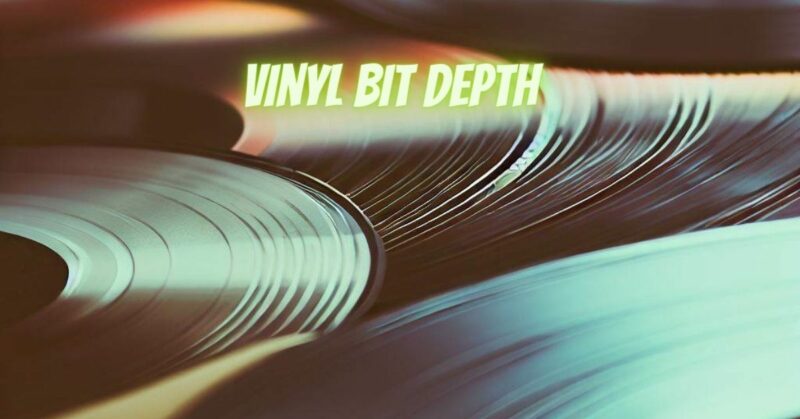Vinyl records, celebrated for their warm and authentic sound, represent the pinnacle of analog audio. Yet, despite their analog nature, digital technology plays a significant role in the vinyl production process. One aspect of this interplay is the concept of bit depth. In this article, we’ll explore the relevance of bit depth in the world of vinyl records, how it influences the vinyl mastering process, and the role it plays in preserving the analog essence.
What Is Bit Depth?
Bit depth, in the context of digital audio, refers to the number of bits used to represent the amplitude of an audio signal. It determines the dynamic range of the digital audio, which is the range between the quietest and loudest sounds that can be accurately captured. Common bit depths include 16-bit (CD quality) and 24-bit (high-resolution audio).
The Digital Dimension in Vinyl
Vinyl records, despite being analog by nature, often undergo a digital conversion during the mastering phase. This is because modern vinyl cutting processes typically involve the creation of a digital intermediary master. Understanding the role of bit depth in this process is crucial.
Bit Depth in Vinyl Cutting
When preparing audio for vinyl cutting, the digital audio is typically converted into a high-resolution format, often 24-bit, to ensure accurate representation of the analog source. Here’s why bit depth matters in vinyl cutting:
- Dynamic Range Preservation: Vinyl records have limited dynamic range compared to digital formats. By using a high bit depth, engineers can preserve the dynamic range of the analog source and minimize potential distortion during the cutting process.
- Noise Floor Control: Vinyl records inherently have a higher noise floor compared to digital formats. A higher bit depth allows for more precise control over the noise floor, ensuring that it remains below audible levels.
- Precision in Editing: During vinyl mastering, precise editing and adjustments are made to optimize the audio for the vinyl format. Higher bit depth provides greater precision in these processes, helping to retain the analog warmth and character of the music.
- Post-Cutting Processing: After the vinyl master is created, further processing may be necessary, such as EQ adjustments or noise reduction. Higher bit depth files are more forgiving in post-processing and maintain audio quality more effectively.
Maintaining Analog Authenticity
While the vinyl cutting process involves a digital intermediary, the ultimate goal is to preserve the analog authenticity of the music. This is achieved through a combination of factors:
- Mastering Expertise: Experienced audio engineers and mastering specialists ensure that the digital conversion process retains the original analog essence and warmth of the music.
- Analog Equipment: Analog components, such as vacuum tube amplifiers, are used in the vinyl mastering chain to impart analog characteristics to the audio.
- High-Quality Vinyl Pressings: Premium vinyl pressings and materials are used to faithfully reproduce the audio on vinyl.
Bit depth, while inherently digital, plays a crucial role in preserving the analog essence of vinyl records during the cutting and mastering process. By utilizing higher bit depths, audio engineers can maintain the dynamic range, control the noise floor, and ensure the accuracy of the analog-to-digital conversion. This careful balance between digital precision and analog authenticity is what allows vinyl records to deliver the warm and immersive sound that continues to captivate music enthusiasts around the world.


